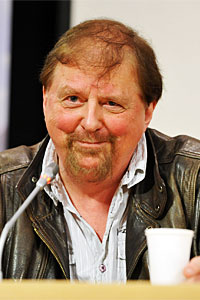Interviewing 100 climate scientists -- proper in-depth interviews, two cameras, lights, the lot -- is a crash course in coping strategies.
Most of these men and women are suffering from quiet desperation, because they know what's going to happen and they can't seem to change it.
They feel obliged to sound optimistic, but give them a half-hour to talk about it and the sadness and despair start to show.
It was all in service of a book on how to survive global warming (now out) and a video series on the same topic (yet to come), and there were many moments when I shared their despair. Yet after all those interviews I have come away with some hope for the future.
Don't get carried away by that notion. We're still in the deepest trouble imaginable. But it has got a bit better: five years ago, everybody was still pretending that we were going to fix all this just by cutting our greenhouse gas emissions.
It was a complete fantasy. Global emissions have not fallen in one single year since scientists first sounded the alarm in 1988, but the climate orthodoxy insisted that we could hold the warming down below +1.5 degrees Celsius until the end of the century by emissions cuts alone.
Most climate scientists loyally followed that line for as long as they could -- mustn't discourage the troops -- but that time is now past. In fact, the average global temperature has already exceeded that +1.5C target for an entire year.
It may fall back a bit once the current El Niño warming ends. (That's a natural cycle that dumps some extra heat into the system around once every three to seven years.) But the El Niño peaked last December and is now almost finished, yet the northern hemisphere is having an even hotter spring than last year (the hottest on record).
The climate is chaotic, so this could still be a false alarm: both the air and ocean temperatures might yet return to the "new normal".
But that new "normal" was already very high, so our normal emissions will drive us back up to +1.5C for good by 2030 even if the ocean anomaly disappears.
So, what can we do now?
The lost time hasn't been entirely wasted. Solar and wind power have grown faster than anybody dared hope ten years ago (though not yet fast enough to start cutting into the 82% share of energy produced from fossil fuels).
But most importantly, a generation of inventors, engineers and entrepreneurs foresaw that there would be a big demand for new approaches to curbing the warming once the public realised the urgency of the situation.
A profusion of those new ideas and technologies is now spilling out onto the market, and if enough of them fulfil their promise we might still get through this century without runaway global warming wrecking our future. But only on one condition.
We are already in the danger zone.
Somewhere between 1.5 degrees hotter and 3.0 degrees hotter, most climate scientists believe, we will cross various "tipping points" that trigger "feedbacks": extra warming from non-human sources.
For example, parts of the Arctic are warming four times faster than the rest of the planet because the sea ice and the snow cover on land are melting.
We caused the warming, so that's our fault, but we could stop the melting if we stopped our emissions.
However, that melting exposes dark rock and open water that absorb sunlight instead of reflecting it back into space. This causes more warming, which is also ultimately our fault -- but it's not under our control. We can't turn it off.
There are about a dozen feedbacks like that. We don't know exactly when they will kick in, but scientists think we'll trip them all at various points between here and +3C.
That is "runaway" territory, so we have to hold the temperature down while we work on our emissions -- even if that means doing it artificially.
The good news is that there are promising ideas for how to hold it down, because they will probably be needed. It will be a long, hard slog, but we are not yet doomed.
Gwynne Dyer is an independent journalist whose articles are published in 45 countries. His new book is 'Intervention Earth: Life-Saving Ideas from the World's Climate Engineers'. The second article of his climate change series will be published this month.
